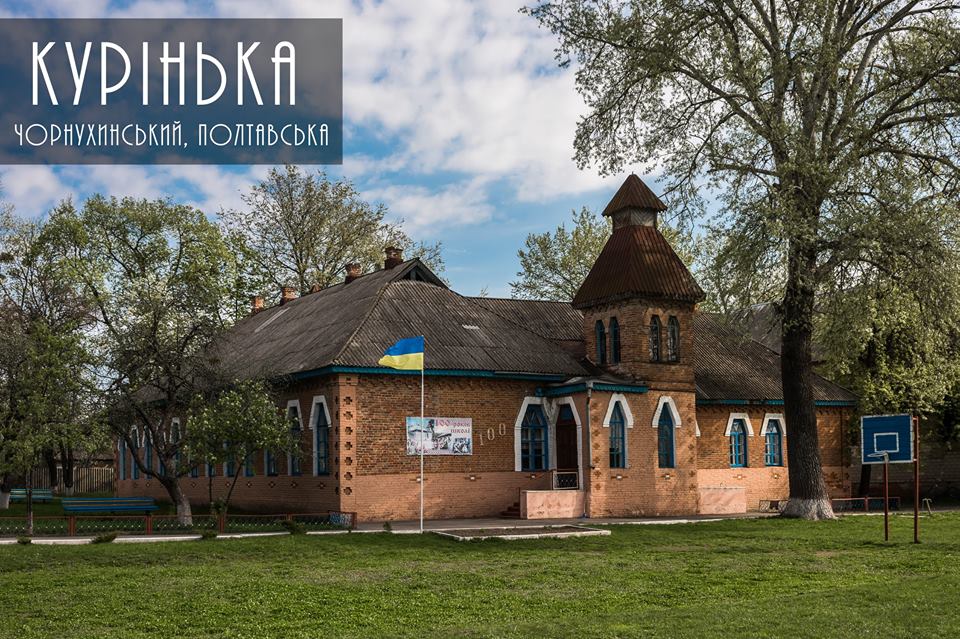Researchers identified 53 education establishments are built in the style of Ukrainian modernism, now they want to organize this information and suggest it for UNESCO protection.
A school complex in Poltava region is a unique sample of Ukrainian modernism and can qualify for entering the UNESCO World Heritage List. This was stated by the participants of the project “Schools of Lokhvytske zemstvo” at a press briefing held at Ukraine Crisis Media Center. “We believe that our schools have all chances to get into a preliminary list at least. UNESCO latest decisions show that recently they have included [in the heritage list] those complexes which are special not so much because of their architectural elegance but their originality, interest, and are valuable for a particular region,” explained Ivan Bykov, director of “Ivan Bykov Architecture Workshop”.
The schools are a sample of an original style – Ukrainian modernism
As of today, the project participants have identified 53 schools built in this style, as well as a village doctor’s house. They all are concentrated in the former Lokhvytskyi povit of Poltava gubernia. Today it is the territory of three regions – Poltava, Sumy and Chernihiv. “Victor Chepelyk was the first to systematize this heritage. Ukrainian modernism was his lifetime project. It was he who acquainted us with a theorist of this style – Opanas Slastion – architect, ceramist, musician and artist. He formulated 7 basic principles of Ukrainian modernism that distinguish it from all others,” said Maksym Ivanov, project researcher, photographer.
“The peculiarity of Ukrainian modernism is that it is a fully functional Ukrainian national style created in the era of Russian occupation. In addition, schools of Lokhvytske zemstvo occupy the biggest territory with buildings of the same type, created by one architect, which have survived to the present day,” he added. Artist Oksana Chepelyk, daughter of Victor Chepelyk, noted that Ukrainian modernism had developed simultaneously with its development in other European countries. “It is also associated with the birth of national consciousness in different countries – Czech Republic, Poland and Romania. Therefore, Ukraine was also included in the process and did not fall behind the others,” she noted.
The most characteristic features of this style are one or more towers symbolizing public buildings, double roofs and dormers with add-ons. Almost all of them were demolished during the Soviet era. There are also sliding doors between classrooms that allowed either dividing a room into several classes or merging them into one. The schools also have a unique external decoration: a wooden structure lined with the brick patterns on the outside, which follows the typical Ukrainian embroidery ornaments. “This is “embroidery” made with bricks. Slastion created three series of typical projects, and each of them has its own subtypes, so each school is special,” said Ivan Bykov. This idea was proposed to the architect by Olena Pchilka, Lesya Ukrayinka’s mother.
Ukrainian modernism was one of the factors in the formation of national identity.
Another peculiarity of these schools is the fact that they were built by professional architects as real works of art, but for the village – as factors in the formation of Ukrainian national identity. “The villagers called them “Shevchenko schools,” though Shevchenko had nothing to do with them,” said Ivan Bykov. During the Soviet regime the most original elements were demolished to extinguish these manifestations of the national identity.
Current achievements: 10 expeditions 5 “tolokas”, the first pilot projects
Within the scope of investigations the activists conducted 10 expeditions during which they took photos of all schools. “We systematized these photos and arranged the exhibition. We hold exhibitions in Poltava region and tell people about the treasure they have nearby,” informed Olga Gerasymiuk, project initiator, first deputy head of the National Council on Television & Communications. As it turned out, most people knew neither about cultural nor about symbolic value of these abandoned, and often dilapidated buildings.
We organized five “tolokas,” events where people cleaned school buildings and discussed their history. The largest “tolokas” took place in Kharsiky (Poltava region). The last one attracted over 100 participants. According to Olga Gerasymiuk, they even managed to find the old-timers who had studied or taught in these schools. Many activists who are thinking about the possibility to renovate the schools have joined the movement. Most of schools are abandoned now because the villages have become deserted. Olga Gerasymiuk noted that the project becomes a major motivator for many other activists from all over Ukraine because there are many landmarked buildings that remain unnoticed in each region.
The first pilot project is launched in the school in Khrystynivka. A cultural and educational center for community development is planned to be created there, informed Olena Zadorozhnya, representative of the Minister of Agrarian Policy and Food of Ukraine. She noted that the local government is willing to contact, especially the relevant Poltava Regional Commission, which is responsible for the protection of architectural monuments.
Owing to the project nine schools received the status of protection
Project participants have already been developing the corresponding documents for each school so that they could be registered as heritage objects. “We have already prepared about 20 registration cards, and are planning to prepare the cards for all 53 schools and for Zemsky Doctor House in Chornuhy,” informed Ivan Bykov. He noted that at the beginning of the project nine schools had the status of newly discovered cultural heritage objects. “Now there are 18 of them. Thanks to our friends from Poltava region and prepared documents, the first complex in Kharsiky has already received the protection status. The next complex is ready now, which includes eight schools and a church in Vasylky (Lokhvytsky district),” he added.




